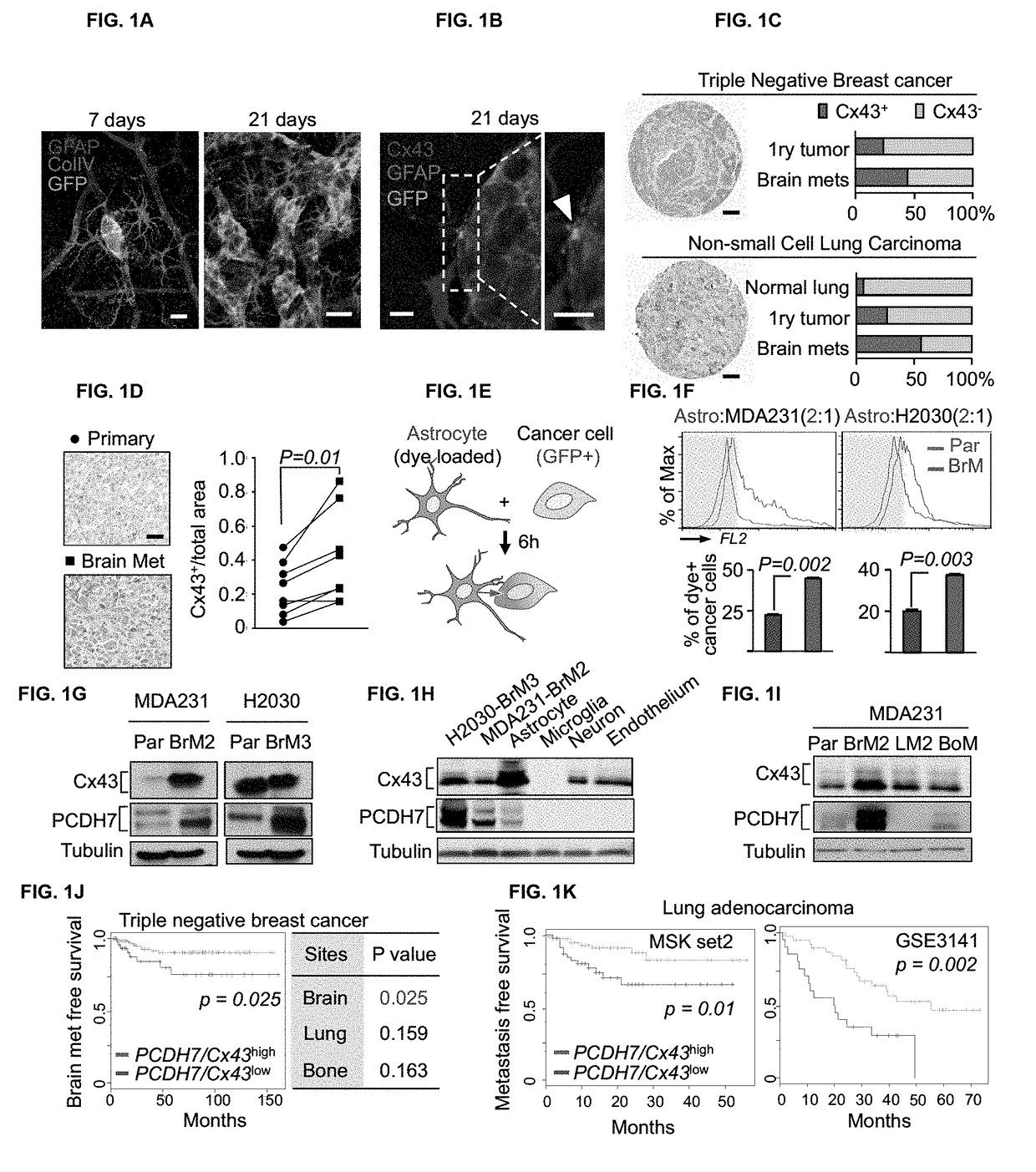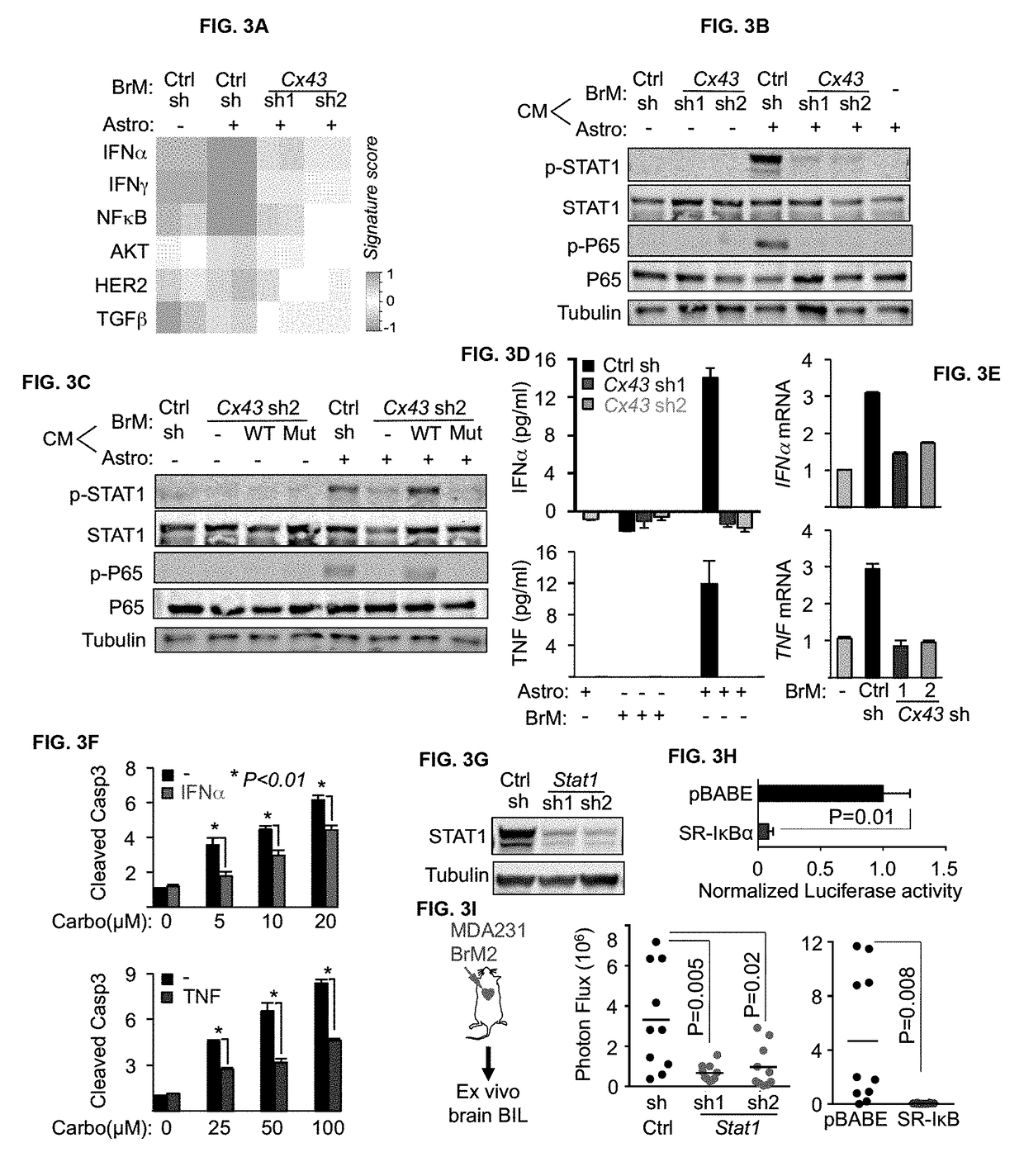Methods for treating brain metastasis
a brain metastasis and brain metastasis technology, applied in the field of brain metastasis treatment, can solve the problems of limited control of brain metastases, unipolarity of astrocytes in metastasis, etc., and achieve the effects of reducing the progression of brain metastases, promoting brain metastasis, and inhibiting gap junction function
- Summary
- Abstract
- Description
- Claims
- Application Information
AI Technical Summary
Benefits of technology
Problems solved by technology
Method used
Image
Examples
example 1
6. EXAMPLE 1
Protocadherin 7 and Connexin 43 Mediate Carcinoma-Astrocyte Gap Junctions and Brain Metastasis
6.1 Materials and Methods
[0124]Cell Culture.
[0125]Human MDA-MB-231 (MDA231), murine MMTV-neu, their metastatic derivatives, and murine 373N1, 393N1, 482N1, 2691N1 cell lines were cultured in DMEM with 10% fetal bovine serum (FBS) and 2 mM L-Glutamine. Human H2030 cells and metastatic derivatives were cultured in RPMI 1640 medium supplemented with 10% FBS and 2 mM L-Glutamine. For lentivirus production, 293T cells were cultured in DME media supplemented with 10% fetal bovine serum and 2 mM L-glutamine. Human primary astrocytes, brain microvascular endothelial cells (HBMEC), adult dermal fibroblasts, and microglia were cultured in media specified by the supplier (ScienCell), and used between passages 2-6. All cells tested negative for micoplasma.
[0126]Animal Studies.
[0127]All experiments using animals were done in accordance to protocols approved by the MSKCC Institutional Animal ...
PUM
| Property | Measurement | Unit |
|---|---|---|
| concentrations | aaaaa | aaaaa |
| retention time | aaaaa | aaaaa |
| retention time | aaaaa | aaaaa |
Abstract
Description
Claims
Application Information
 Login to View More
Login to View More - R&D
- Intellectual Property
- Life Sciences
- Materials
- Tech Scout
- Unparalleled Data Quality
- Higher Quality Content
- 60% Fewer Hallucinations
Browse by: Latest US Patents, China's latest patents, Technical Efficacy Thesaurus, Application Domain, Technology Topic, Popular Technical Reports.
© 2025 PatSnap. All rights reserved.Legal|Privacy policy|Modern Slavery Act Transparency Statement|Sitemap|About US| Contact US: help@patsnap.com



